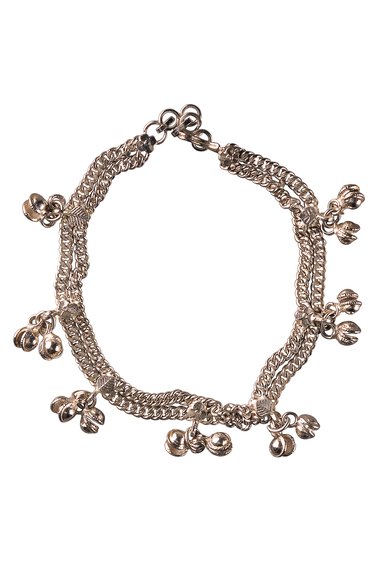
Unlike fine jewelry, costume jewelry is made from nonprecious metals called base metals. Most of these are both beautiful and relatively benign. However, nickel can cause an allergic reaction, while the lead found in some alloys has been linked to far more serious conditions and is highly regulated.
Base Metal
Video of the Day
Base metal is a jewelry industry term for nonprecious metals used in costume jewelry, including copper, aluminum, brass, nickel silver, pewter and white metal, also called pot metal. Nickel silver is a silvery-white alloy resembling silver made from nickel, zinc, copper, iron, manganese and sometimes lead. Pot metal and white metal are catchall terms for any alloy with an unspecified content that may include tin, zinc, copper, lead, bismuth or antimony.
Video of the Day
Platings
Many pieces of costume jewelry are covered in a thin coat of metal called plating. Gold plating resembles 14-karat gold and consists of a thin coat of yellow color or even real gold. Yellow plating resembles gold but is brassier and longer lasting than gold plate. Silver plate resembles sterling silver and is made from a thin layer of silver color or real silver. Copper plating consists of a thin sheet of copper. Copper plating is typically placed over metal that is harder than copper. Pieces made with copper plating are generally stronger than pure copper. White plating is a silver-colored plating that is slightly grayer than silver-plating. Gunmetal plating ranges in color from dark gray to black. Plating described as "antiqued" has been darkened for a "distressed" look designed to seem vintage.
Nickel Allergies
Nickel is found in a variety of objects including eyeglass frames, watchbands, coins, necklace clasps and earrings. Frequent contact with nickel can cause a nickel allergy. Nickel allergies are a frequent cause of allergic contact dermatitis, a form of itchy rash caused by touching otherwise innocuous materials. Although nickel allergies are treatable, once someone develops the allergy she will remain sensitive to nickel and should avoid it. Symptoms include itching, bumps or rash, redness, and dry patches of skin. Some alternative metals to nickel include sterling silver, karat gold and niobium.
Lead Warnings
Lead was traditionally used in alloys such as pewter so that they would be softer and melt at lower temperatures. Lead has been linked to a variety of health problems including infertility, nerve disorders, joint pain, muscle pain, high blood pressure, memory and concentration problems, and irritability. Children exposed to high levels of lead are at risk for brain damage, stomach problems, anemia and muscle problems. Under the Consumer Product Safety Improvement Act, in effect since 2009, products for children that include accessible components containing more than 300 parts per million of lead are illegal hazardous products. In addition, California state law applies lead limits to jewelry intended for adults. Anyone who sells jewelry in California must comply with California law.